At the end of 2024, Australian rental affordability was tracking a record low, according to Cotality (formerly Corelogic), with the median household required to spend 31% of their income on renting the median home.
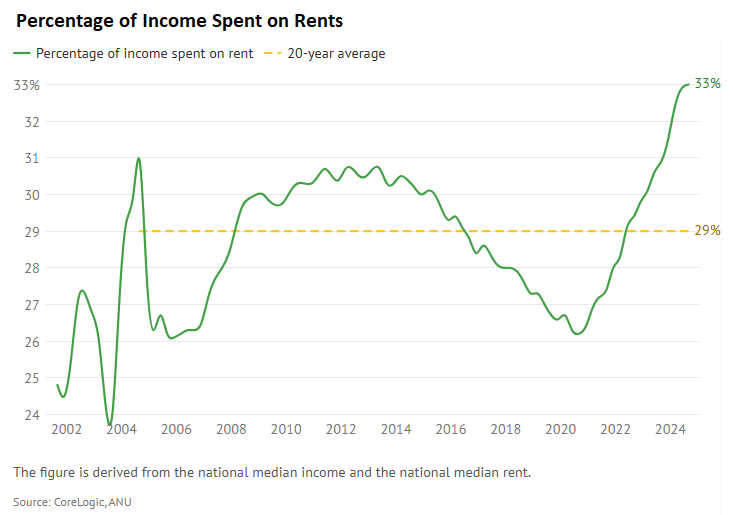
Cotality’s latest quarterly rental also reported that national median rents have risen by 43% over the last five years, causing the average tenant household to pay an additional $10,350 per year in rent.
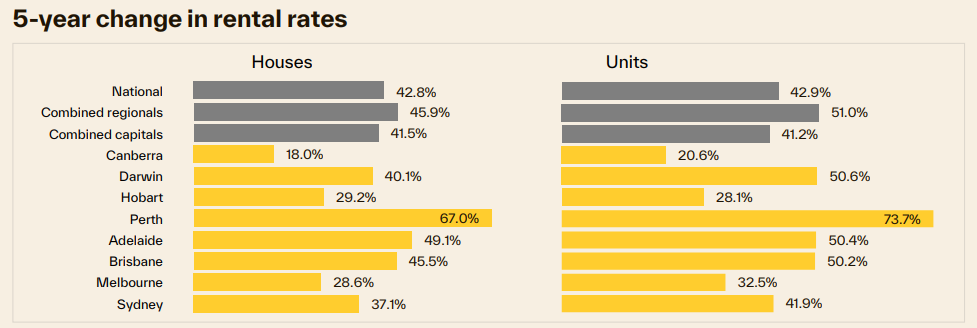
Source: Cotality
Cotality economist Kaytlin Ezzy also warns that rental growth has reaccelerated for the first time in 16 months, sparking fresh concerns around affordability and CPI inflation.
Last week, the Australian Bureau of Statistics (ABS) reported the strongest net permanent and long-term arrivals over the first six months of any year on record.
In the first half of 2025, a record 279,460 net permanent and long-term arrivals landed in Australia, up 13,080 (5%) from the 266,380 net arrivals that landed last year and 108,890 (64%) higher than the same period in 2019, before the pandemic.
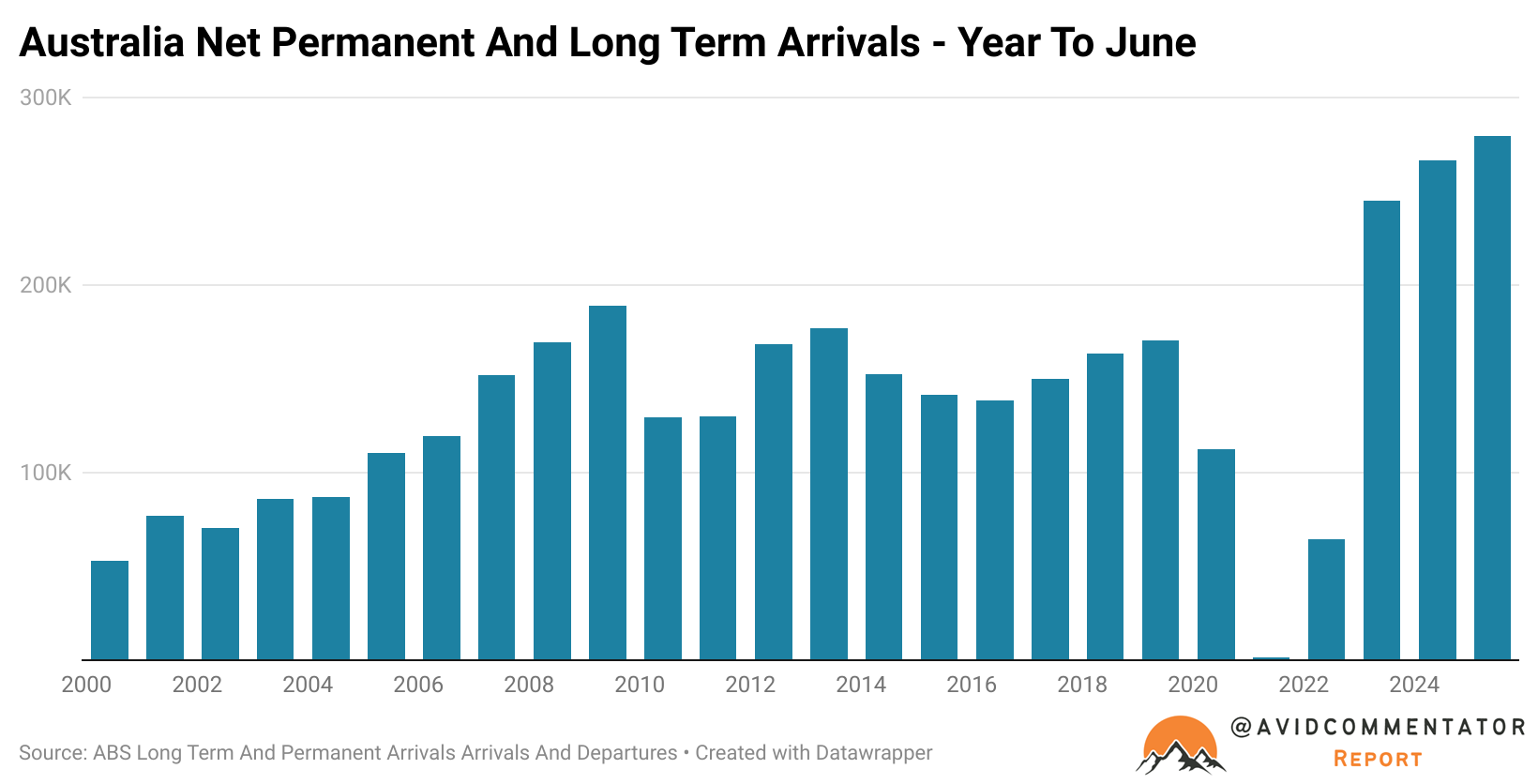
As illustrated below, the annual rate of immigration appears to have surged higher after bottoming in January 2025.
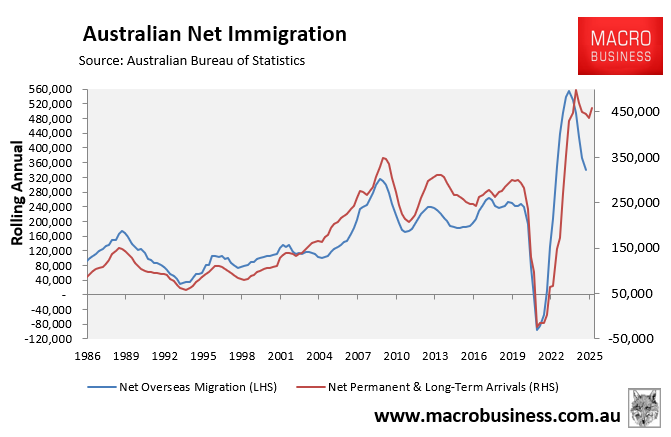
This apparent surge in arrivals appears to be manifesting in tightening rental vacancies as demand outstrips supply.
Cotality’s July housing report noted that “rental vacancy rates [are] holding close to historic lows, tracking at 1.7% nationally in July” with the tightening of vacancy rates illustrated below by Justin Fabo from Antipodean Macro:
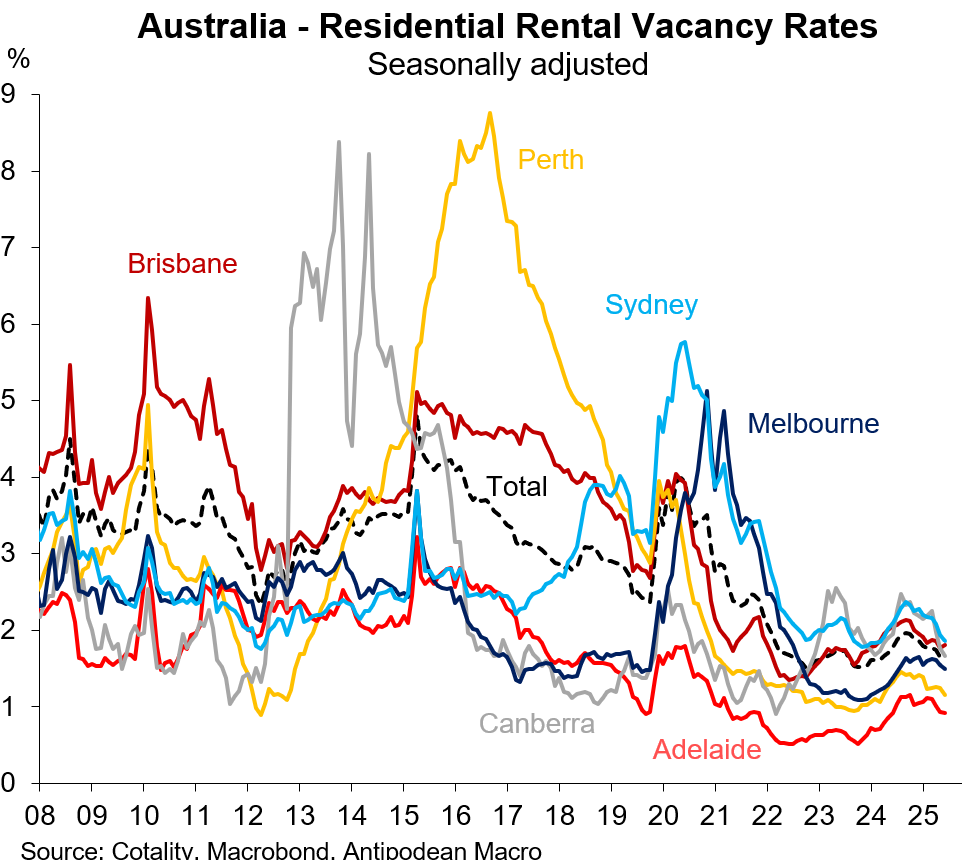
The latest rental vacancy rate data from SQM Research paints a similar picture:
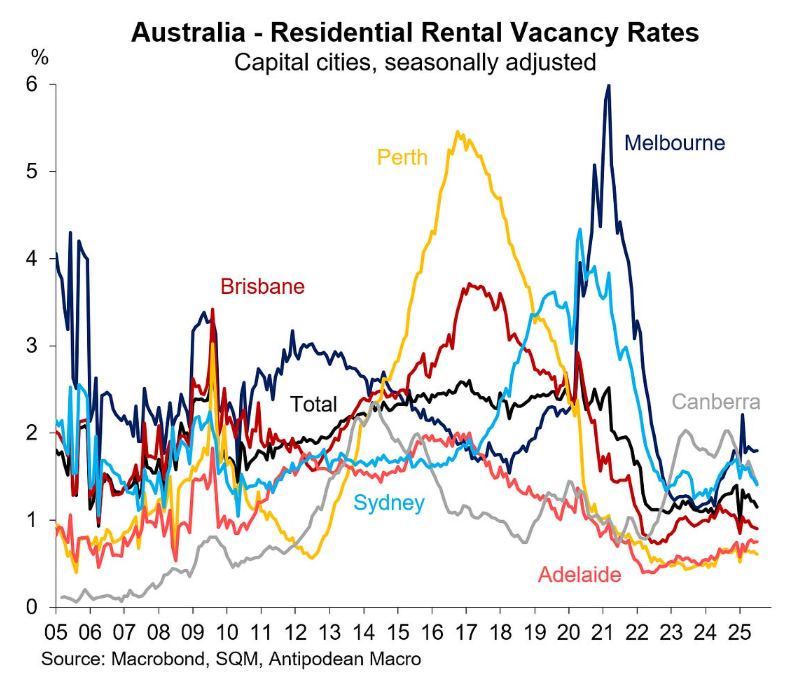
According to SQM Research, “just 37,863 rental vacancies nationwide, compared to 39,027 last month and 39,701 a year ago, signalling sustained pressure on tenants and limited relief in sight”.
“Vacancy rates remain tight across most capital cities, and this is continuing to place upward pressure on rents”, noted Louis Christopher, Managing Director of SQM Research.
“While there are short-term fluctuations—particularly in Perth and Canberra—the broader trend is clear: rental affordability is deteriorating”.
As illustrated below by Justin Fabo, asking rents continue to surge, especially for houses.
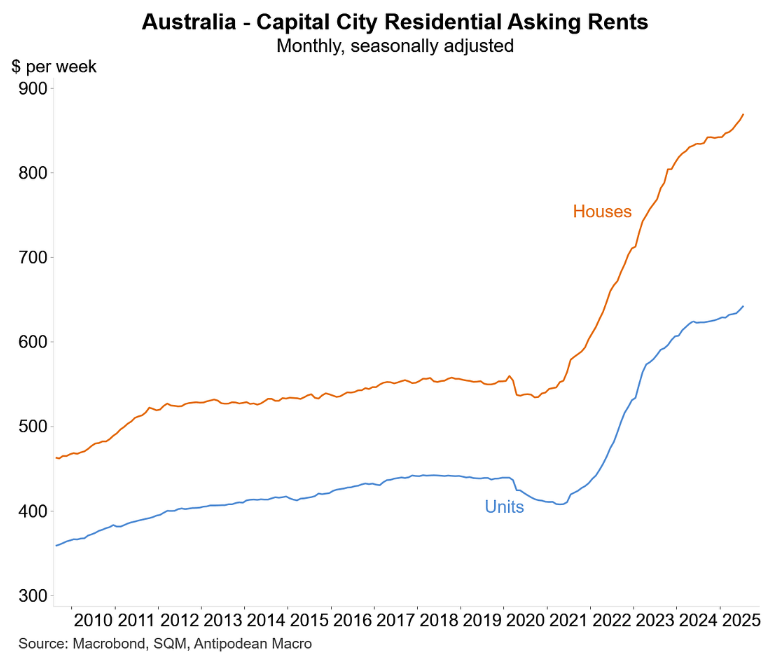
The picture for renters remains bleak, with the Albanese government revealing this month that it has increased the planned level for international students by 25,000 to 295,000 for 2026.
The government also watered down the English-language requirements for visa holders, which will increase overall temporary migration to Australia.
As a result, Australia’s international student and temporary visa numbers—already the highest in the advanced world compared to its population—are set to rise further, putting upward pressure on rents.

